3D packaging simulation success stories with DHL
See how DHL, the world’s largest logistics company uses Visual Components manufacturing simulation to power the adoption of automation in the age of accelerated digitalization.
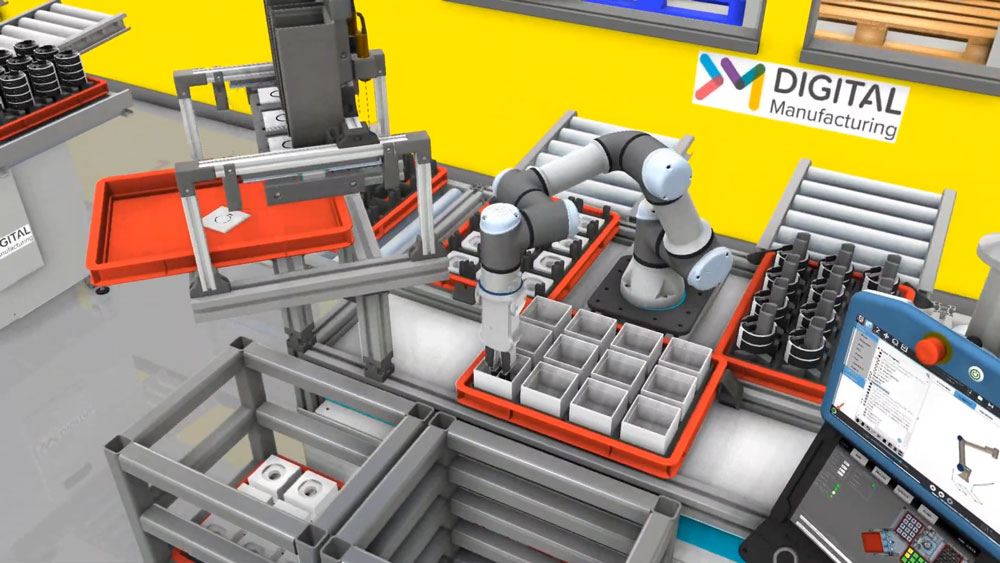
When Adrian Dalsey, Larry Hillblom and Robert Lynn founded DHL in 1969, they didn’t know they would revolutionize the world of logistics. Today, DHL is the world’s leading logistics company. They employ over 550,000 people in over 220 countries helping organisations cross borders, reach new markets and grow their business.
Within DHL Supply Chain, Digital Manufacturing acts as an innovation and technology development hub for robotics and automation; sourcing, manufacturing, and integrating robotics solutions that ensures DHL builds a resilient, sustainable competitive advantage.
Download full case study in PDF here.
Challenges
Digital Manufacturing highlighted the following challenges that DHL typically faces in the packaging operations,
- Customization – Capability of accommodating differentiated packaging solutions to multi-faceted customers across different industry verticals including Health, Pharmaceutical, Automotive Manufacturing, Financial Services and Food & Beverage.
- Tight Packaging Requirements – Highly sophisticated outsourced supply chains requiring a high degree of technical control for efficient and accurate outputs.
- Visualization – The ability to show customers how their operations will benefit by using DHL and how DHL can achieve efficiency gains, cost reduction and increased automation into the packaging processes.
Speaking about the challenges, George Walsh, Product Development Engineer at Digital Manufacturing, DHL mentioned, “The constantly changing nature and highly competitive world of supply chain and logistics means we need to develop our automation systems quickly and at the lowest possible cost.
Providing flexible and robust solutions is critical to the seamless service that DHL provides, and that’s where simulation and visualisation of the challenge enables our success. Simulation software and process modelling helps us show customers how we can be better for their business without having to interrupt their operation. Simulation helps improve automation to achieve efficiency gains.”
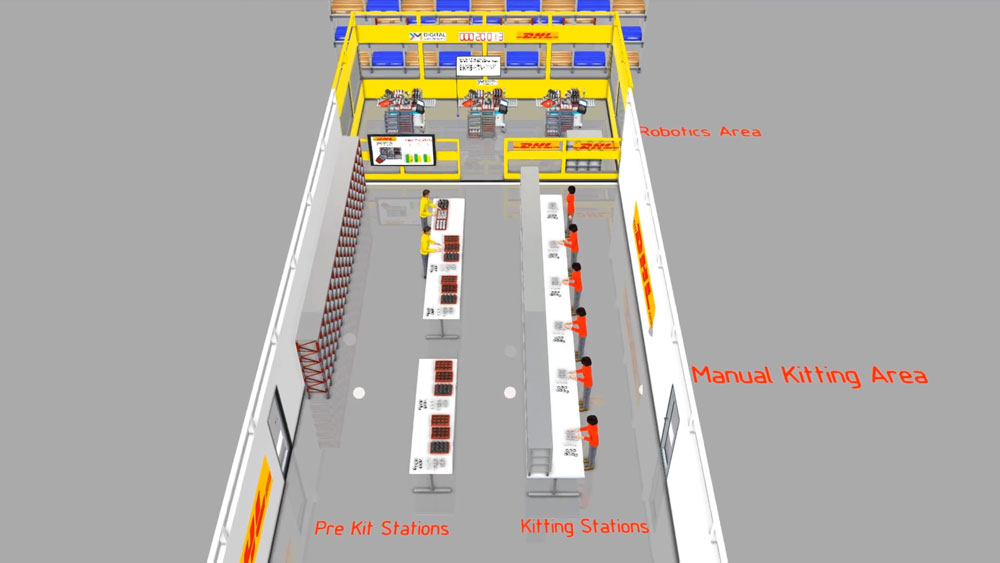
Why DHL chose Visual Components
Visual Components was chosen as a simulation tool for DHL projects for several reasons, but here are some of those mentioned by Digital Manufacturing,
- Advanced Platform that can be used from model building and layout planning to equipment verification and process optimization.
- The ease of use and simple workflows for modelling packaging solutions and processes
- Extensive library of parametric and reusable models in the Visual Components e-Catalog saves time in setting up the simulations.
- Fast and easy modelling of custom equipment that could be used in simulation with real behaviours.
- High-quality graphics and ability to export content makes it a visual communication tool.
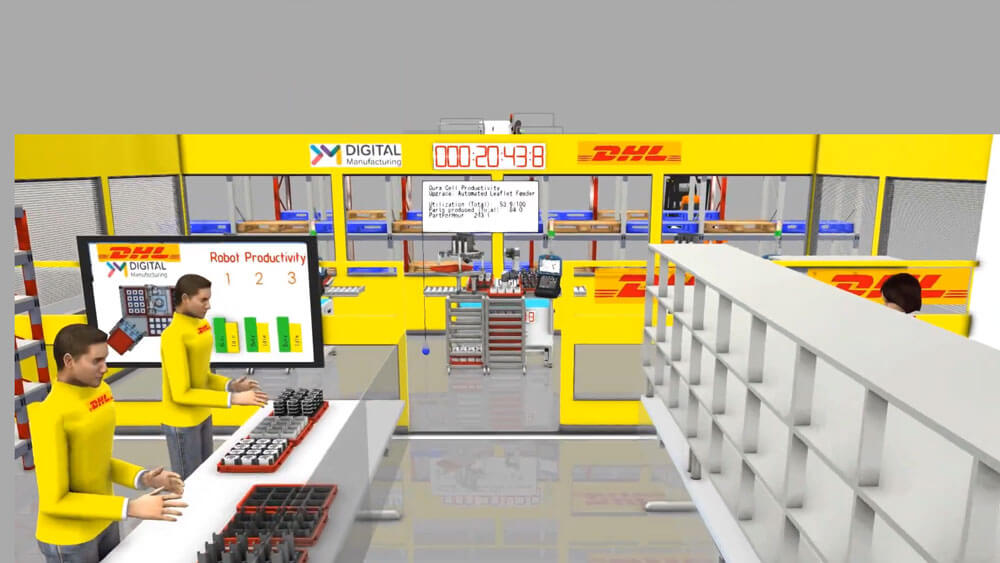
Digital Manufacturing shared some of the case studies where simulation with Visual Components streamlined the operations and improved the efficiency of processes in different setups.
Health industry packaging system – processing efficiency improved by 35%
This case study is about a production system in the healthcare industry where the manual packaging process was carried out at many individual workstations spread across the UK. Digital Manufacturing saw the opportunity to improve production line efficiency through automation of the non-value add tasks combined with line balancing best practice. Using Visual Components, it was possible to validate efficiency improvements of 35% by switching from individual workstations to a balanced flowline.
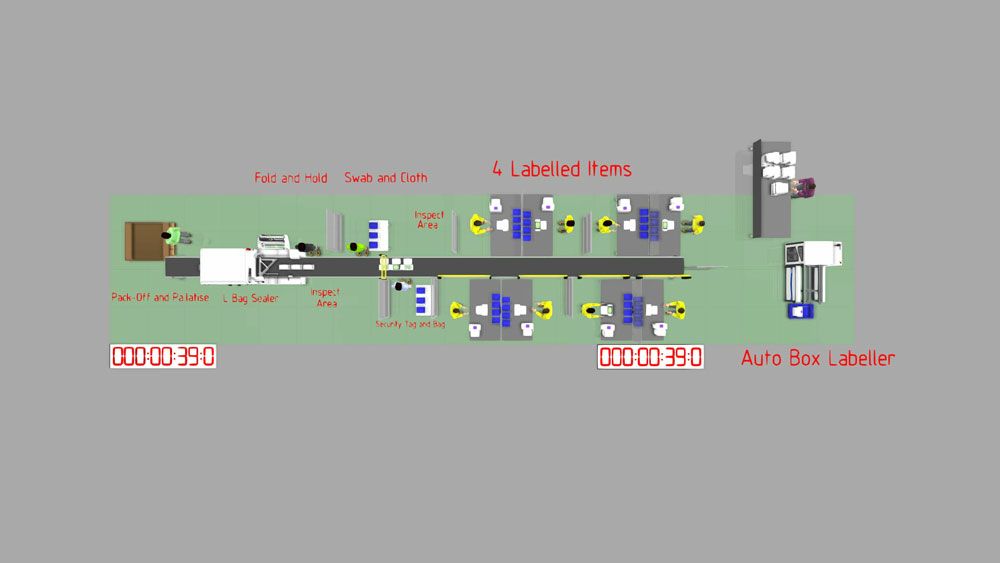
Moreover, with the use of simulation, it was easy for the customer to visualize the functionality of the process which helped in the decision making and implementation. The turnaround from the first concept of seeing the manual operation to producing the first simulation was 3 weeks – and going from presenting the simulation and confirming the project another 3 weeks. Within a couple of weeks from the decision, the first line was built. Simulation with Visual Components not only added more realism by demonstrating the overall process with actual products and tasks but also created a trust that enabled the customer to make their production decisions faster compared to the cases without simulation.
Electronic goods packaging – increasing productivity by 35% whilst maintaining costs.
The customer wanted to understand the impact of upgrading their single robot production line to three in parallel with minimal operator intervention. Visual components enabled the Digital Manufacturing team to experiment with production line automation concepts to find the right balance of cost, scalability, and performance. The use of simulation allowed the productivity of each concept to be calculated during the development stage and the selection of the most optimal scenario was easier with data-driven facts. The selected production concept improves productivity of each robot system by 34% and improves operator interaction from once every 7 minutes to once every 50 minutes including a reduction in total touch time by 50% to 9 minutes.
Exceeding the project goals
Using Visual Components, DHL was able to realize significant operational improvements and cost savings for the benefit of their outsourced customers. This provided a competitive edge for DHL to win more customers. Here are some of the important benefits and facts highlighted by DHL:
1. Visual communication tool
By using the software, DHL’s customer was able to see the impacts of DHL’s proposed changes to production line efficiency (using automation) and this enabled decisive buy-in by their customer.
2. Efficiency gains
It was possible to validate efficiency improvements of 35% by switching from individual workstations to a balanced flow-line.
3. Improved floor plan layout
Floor plan requirements reduced by 33% whilst production efficiency improved by 35%.
4. Identify potential issues early
Simulation allowed for improved automation, process flow and centralising conveyor belt division of labour. This led to headcount reductions from 39 FTE to 13 FTE, without sacrificing output, quality or flow.
5. Quickly iterate multiple concepts
Multiple simulation scenarios are created to calculate the optimum production flow and use of robots compared to humans. This results in improvements in robot productivity by 14% and improves the operation interaction from once every 7 minutes to once every 50 minutes which reduces the total touch time by 50%.
When speaking about the role of Visual Components in different industrial cases, George mentioned,
“Using Visual Components, we were able to achieve increased efficiency gains, reduced packaging and processing costs whilst helping our customers visualise how automation could improve overall production efficiency gains. It’s a game-changer.”
George Walsh, Product Development Engineer at Digital Manufacturing, DHL
Summary
DHL used Visual Components to improve packaging production, reduce packaging costs, implement increased automation into the packaging process for the benefit of their outsourced customer whilst equipping DHL with a competitive advantage to win more customers. Most of their simulation use cases can be summarized as following,
- Design, optimize, and verify the packaging process and production feasibility.
- Increase capacity and flexibility through automation.
- Dynamically present solutions to customer executives and project stakeholders.
- Move fast through designing and building simulation models.
Further reading
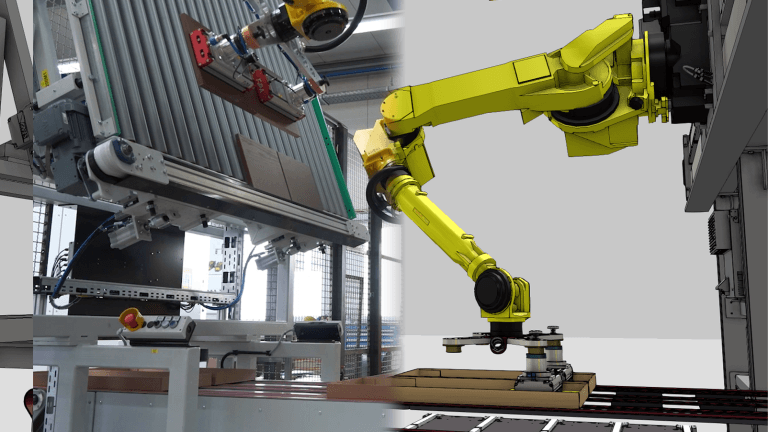
Packaging perfection: navigating variations in furniture packaging with Visual Components
The furniture industry has shifted from handcrafted pieces to mass-produced, self-assembly models made from materials like MDF or chipboard. This change has complicated packaging due to the need for high-volume...
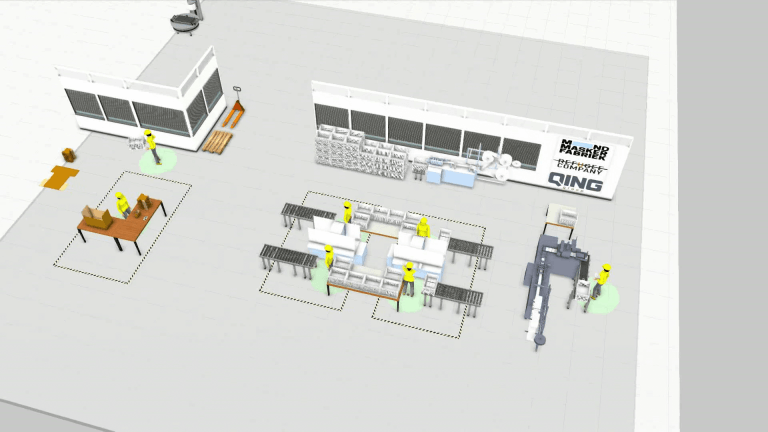
QING Case Study: Using 3D Simulation Technology to Set up a Face Mask Factory During the COVID-19 Pandemic
In this case study, we’ll examine how QING used 3D manufacturing simulation to set up a fully functional face mask factory in the Netherlands within just a few weeks to...

Kaufman Case Study
See how Kaufman is using Visual Components to shorten their sales cycles, improve accuracy of estimates, and implement their solutions more efficiently.